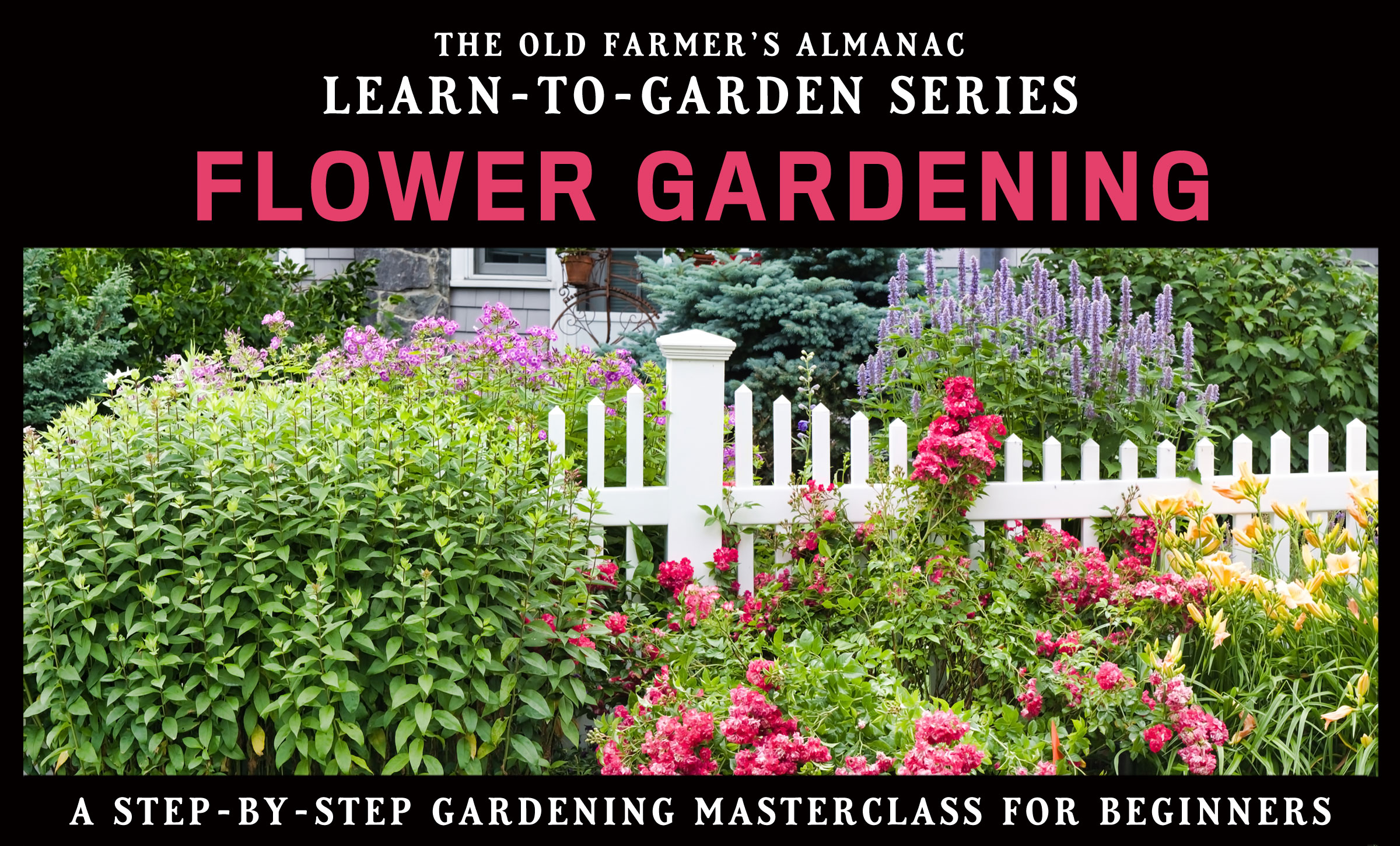Save your zinnia seeds, sunflower seeds, and more! Remember that after flowers bloom, their seeds remain to plant again. Learn how to save flower seeds for next year—plus, which flowers are best for seed-saving.
Let’s walk outside and collect some of the flower seeds still on the plant. Yes, it is Seed Harvesting Time!
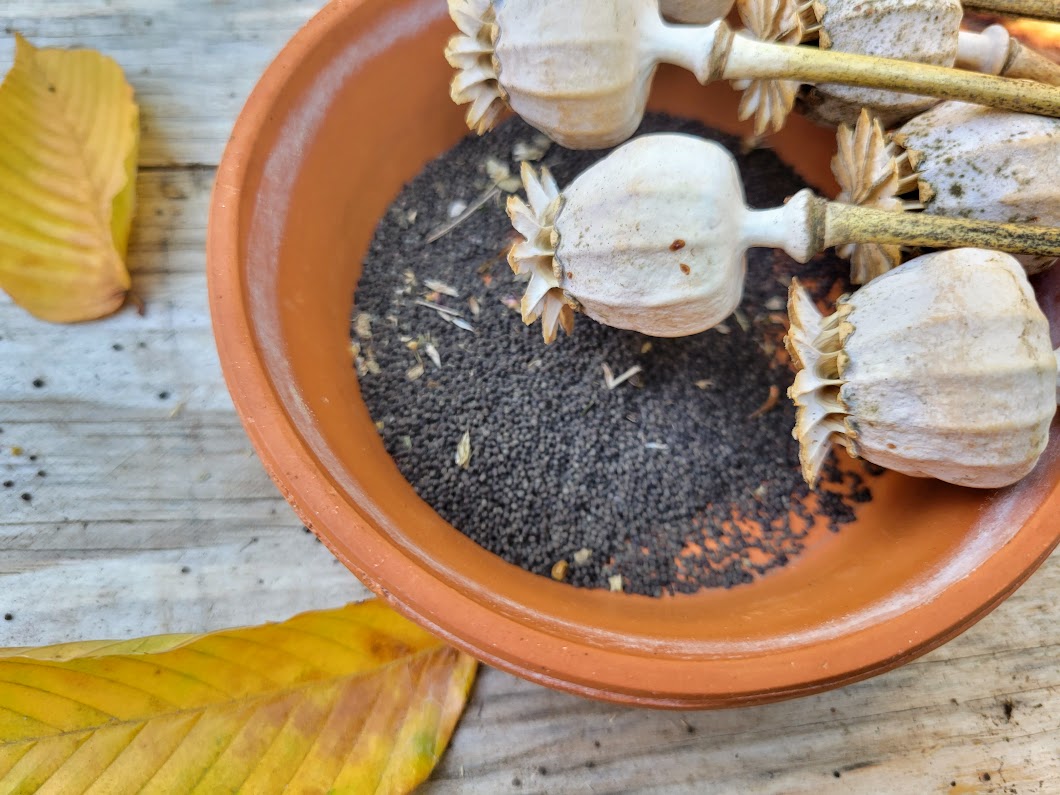
“Seeds are living things…intimately connected and intertwined with story and lineage and place and people.” –Rowan White, Sierra Seeds
Why Bother Saving Seeds Anyways?
Saving seeds is a gift to your future self! Seeds are saved to keep you in a solid supply for your future sowing; to gift to friends, neighbors and relatives; or to participate in seed swaps, seed circles or supply a seed library in your town or neighborhood.
- Save Money. Seed saving can save you money. For the specialty varieties notably, the cost of the seeds and their viability can make buying them impractical or a frivolity—and ever so quickly the addiction of gardening and seed starting can quickly require a bunch of cash to keep you supplied. Seeds don’t last forever and do need to be replaced. Saving your own seeds as a cost-saving mechanism is certainly worthwhile.
- Adaptation. The factor that I feel strongly about is that seeds that have endured the specific micro-climates of your growing locale will be better adapted and more resilient, and they’ll have stronger defenses going into the next growing season. When farming, choosing flower varieties that thrive in our environment—with all of the weather changes and pests that we experience—can determine which blooms do well and which don’t.
- Self-selection. Consider beauty, size, vigor, and disease-resistance. When deciding that you want to save seeds, you can take your time throughout the season to observe your plants and their flowers—then choose and mark the ones that you want to continue to cultivate for your seed collection. Other factors to consider might be the biggest bloom, color preference, earliest blooming or most fragrant. These factors and more can go into very thoughtful breeding programs. Sometimes, we also just wing it at the end of the season and cut like mad all of the blooms and save all of the seeds and cross all of the fingers. There is always next year to be more selective.
- Sovereignty. Seeds represent people, places and cultures. The efforts of many large-scale corporations to privatize and monetize through patenting the genetic diversity and availability of many species of plants could threaten the types of seeds that are available to be saved and shared freely. Saving of seeds, whether flowers or food, is the basis of many communities’ ability to feed and sustain themselves.
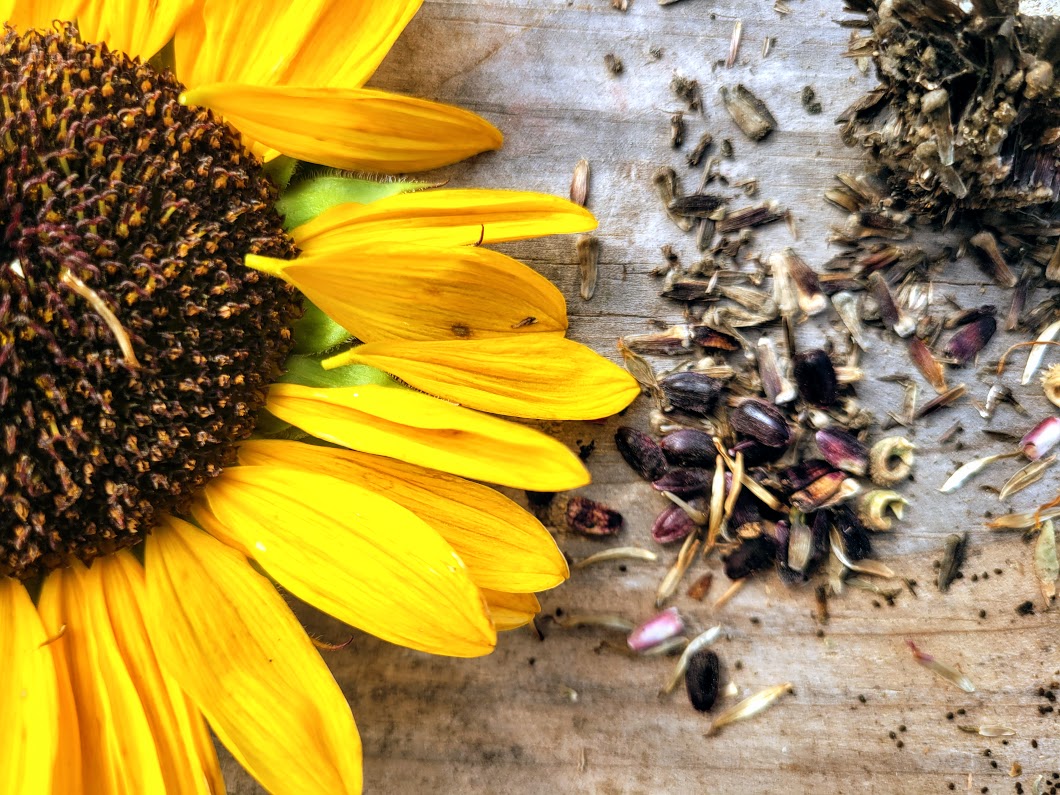
Are All Seeds Worth Saving?
Many old-fashioned annuals grow quite well from seeds collected and stored at home. Zinnias, sunflowers, cosmos, marigolds, California poppies, impatiens, petunias, cleome, snapdragons, nigella, and calendula are among the easiest seeds to harvest and replant in the spring. They’ll bloom as usual within the season!
Perennial seeds can also be saved. Just keep in mind that some perennials may take a couple of years from seed to maturity. So, it’s not the fastest way to go, but it’s certainly more cost-effective than buying starter plants at a nursery. And why not? It’s a fun gamble!
Before you start collecting, you need to know that it may not be worth saving all flower seeds from the garden. It is helpful to know whether the plant is a hybrid or open-pollinated variety.
- Hybrid varieties will not return as the exact same variety. Hybrids come from plant breeders who purposely cross-pollinate different varieties to combine the positive traits of both. Seeds saved from a hybrid usually revert back to a distant ancestor that is not the same as the parent plant. It’s better to take cuttings or divisions of a hybrid plant to get an exact copy. Or, just buy fresh seed each year.
- In standard or open-pollinated plants, varieties have more or less stabilized in their habits from one generation to the next. They are often grown in fields where they self-pollinate and cross-pollinate. Wind and insects carry the pollen from one plant to another, and the seeds that are produced will create fairly similar plants, but not usually as uniform as hybrids will be.
Seed-saving is most effective for amateur or non-breeders with open-pollinated varieties that will be mostly true to their parent plant. I have certainly had plenty of hybrids resow in my garden beds and have found them to differ from the variety originally sown. Some have been pleasant enough to keep, however they are not seeds you can count on to be true. If you’re feeling adventurous, go for it and save from either. If you want to stick to what you like, save seeds from open-pollinated plants only.
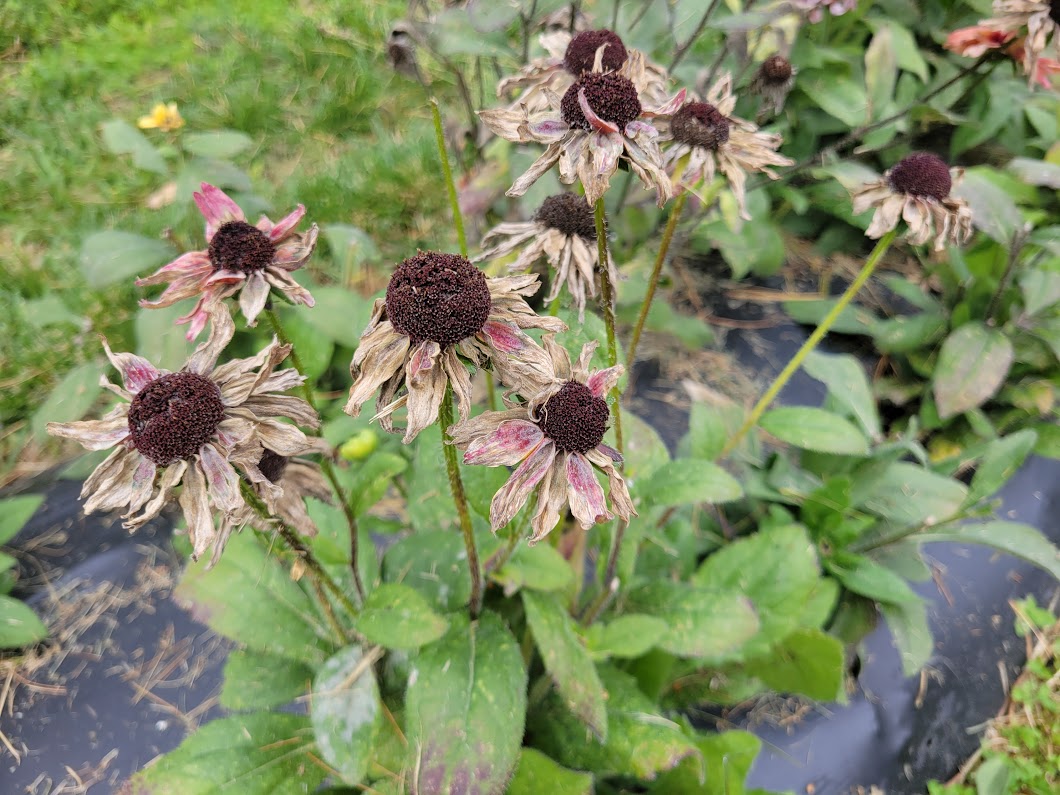
When to Harvest Seeds?
Seed harvesting happens in most regions in the fall. The seeds of most flowers are ready to harvest about a month after the blossoms fade, when the seed heads turn brown.
On any sunny day, the best time to gather your flower heads for processing is after the dew has dried off. With flowers, we are able to use a dry processing method by allowing the seeds to fully dry on the plant before collecting.
By allowing the flower heads to hang on the flowers past their floral prime and letting the autumn winds dry them out, our work becomes that much easier.
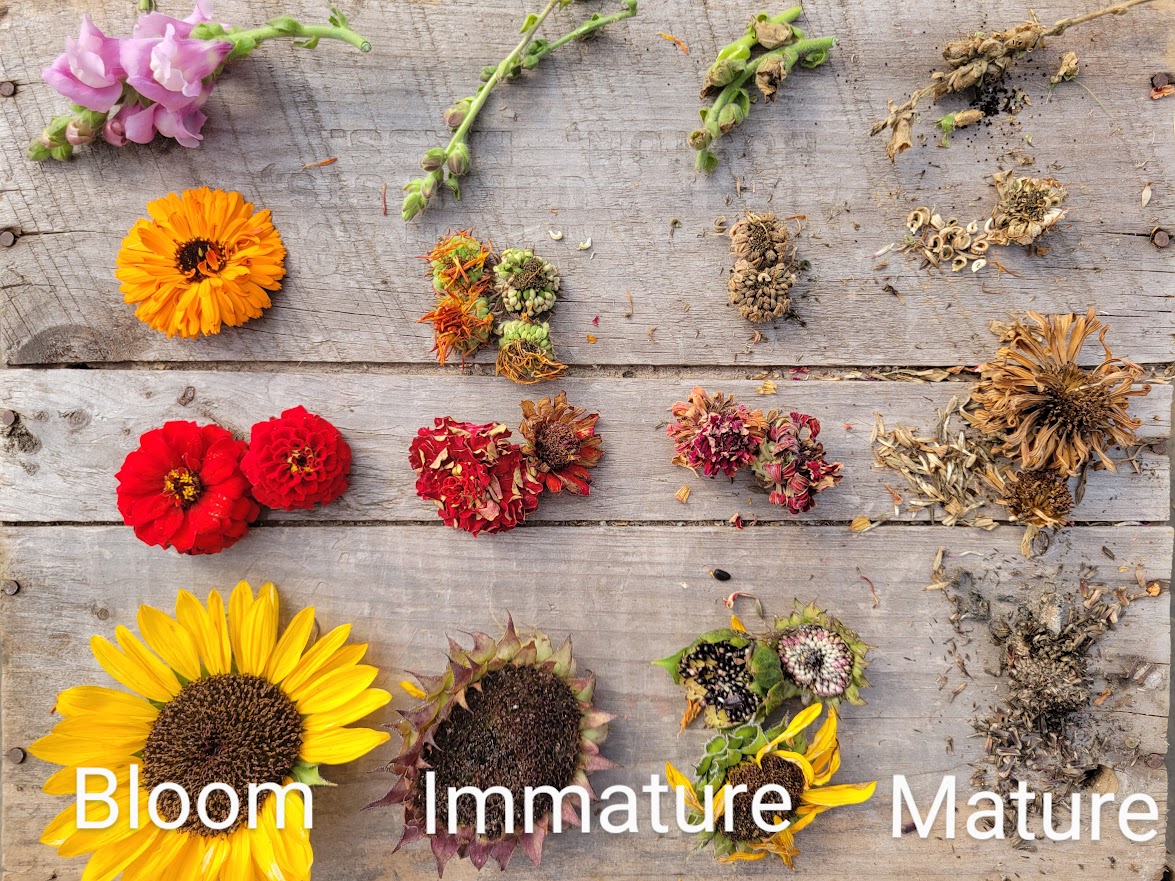
How to Save Flower Seeds
The best time to go around and gather the ripe or mature flower seeds is when the plants have fully turned brown and dried up. The seeds are viable entities that contain all of the starter food and genetic information wrapped in their protective covering for next season’s beauty.
- Gather ripe seeds on a dry, sunny day.
- Using your garden clips, simply cut and collect the stalks or just flower heads into a labeled bag.
- At home, you will separate the seeds from the chaff. Clean the seeds by removing any husks or pods. Try to separate as much debris from the seeds as possible since chaff can harbor insect eggs or fungi.
- Be sure they are dry—to a crisp. Even if the seeds appear dry when you collect them, spread them out on paper, a cookie sheet, or a screen in a cool and darkened area to dry for about a week before storing them. Good airflow with a gentle fan can help move the drying process along.
- My system for saving seeds is simple. I write the name and variety of the flower that I am collecting on a small brown paper bag and then cut the flower heads into the bags. At home, I process each variety based on how dry or ready for storage each seed is.
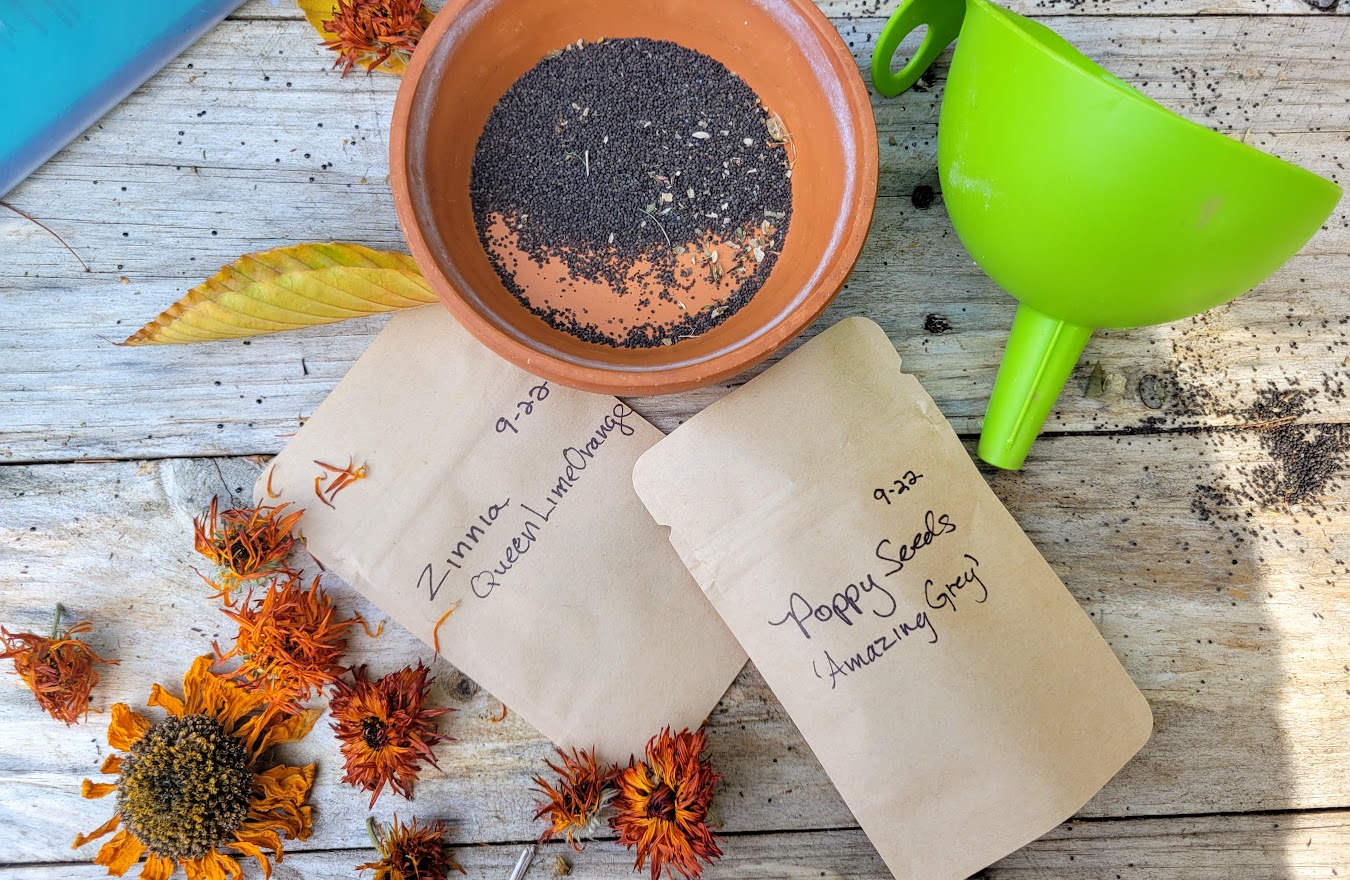
How Do You Store Seeds for Harvest?
Seeds that are ready to be stored for the winter are collected in small containers and then funneled into small paper envelopes where I have recorded the name and variety, and the date of harvest. These seed envelopes need to airtight and will be stored in a dry, cool space to best preserve the seeds’ viability for next season.
The factors that alter the health of the seed are moisture, light, pests, and temperature swings. Keeping seeds stored safely away in a dry, cool spot away from light, moisture, and pests will ensure their safekeeping for next spring.
If humidity is a problem, put a little powdered milk in the bottom of your envelope. The fridge or freezer can also a great place for seed storage because the colder the seeds are kept, the longer they will remain viable for future germination.

12 Annual Flowers to Harvest Seeds From
Many of the seeds from annual flowers that we love to plant can be saved for future use. As well, many perennials can be a great way to propagate your stock. Below is a list of some of the more common annual flowers, many of which I save yearly here on the farm.
- Bachelor’s Button
- Cleome
- Cosmos
- Coneflower
- Calendula
- Delphinium
- Impatiens
- Marigold
- Morning Glories
- Nasturtium
- Pansies
- Poppy
- Rudbeckia
- Scabiosa
- Snapdragon
- Sunflower
- Zinnia
Some Tips for Beginners
- Flowers with large seeds are especially easy to collect, including sunflowers, morning glories, cosmos, hollyhocks, calendula, and zinnias.
- Plants like delphiniums, cleome, nicotiana, nigella, mallows, and foxglove have small seeds that are contained in large seed pods, making them easy to harvest, too.
- With some plants such as poppies and columbine. seed collecting is as easy as waiting till the pods dry on the plants and putting them in an envelope.
- Coneflowers, black-eyed Susans, and other daisy-like flowers hold their seeds longer making them easy to collect.
- Pansies and impatiens, on the other hand, tend to scatter their seed before you even notice they are ripe.
- If the seeds you are waiting for might drop before you can collect them, try tying a small paper or cloth bag over the ripening seed pods.

Field Notes for Seed-Saving
- If you save a lot of seeds, the box in the photo above is very helpful for saving and organizing seeds based on the weeks that I plan to sow them. By storing in small resealable envelopes, I am able to keep moisture out and reseal as needed.
- When collecting seed heads directly from the field, cut them into paper bags. Allow these labeled bags with the seeds inside to sit inside for a day or two to ensure they are dry. Give the bag a good shake and you will find a bunch of the seeds already dispersed. Clean the seed from the chaff with a screen if necessary and store the seed directly.
- Save baby jars, small yogurt containers, or jam jars with lids for seed saving throughout the winter to garner a good supply for harvest seed saving.
- Germination test: Before planting out all of your saved seeds, you might want to do a little test to see if the saved seeds are viable. According to Penn State Extension, simply wet a paper towel (I love the heavy duty blue industrial paper towels because they hold moisture longer than the regular kitchen ones) and set out a small portion of your seeds, at least 25, on the dampened (not dripping) paper towel. Keep it in a warm place, moistened, and check back in 5–10 days. If fewer than 85-90% of seeds have germinated, then it’s best to discard the seeds and start with fresh new seeds.
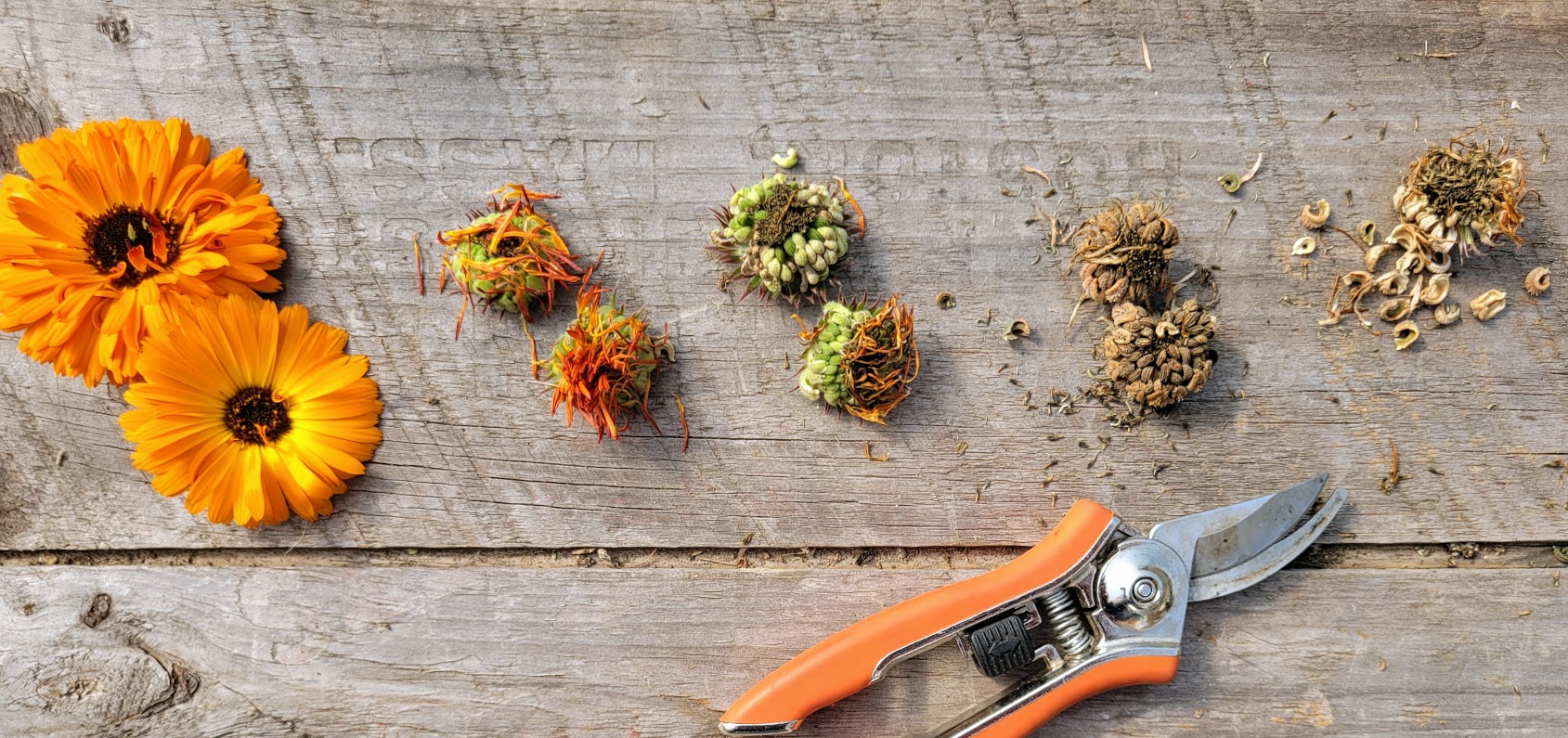
Happy Seed Saving!
Interested in saving vegetable seeds? Learn more!

